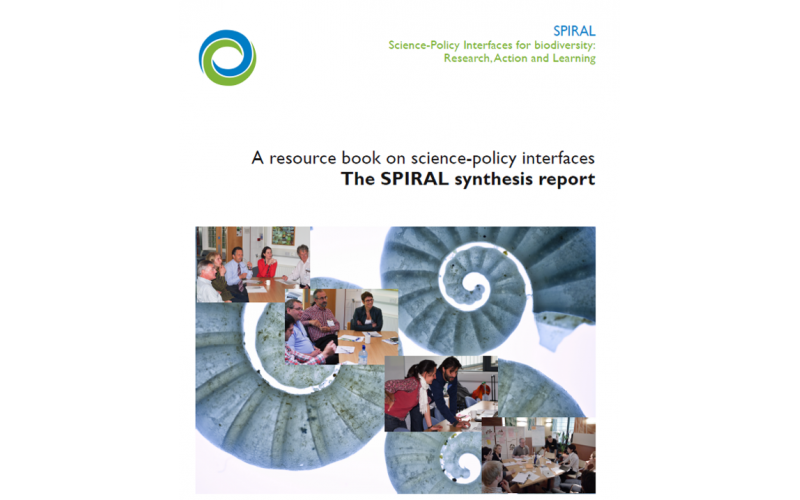This is a resource book on good practices to improve the effectiveness of existing science-policy
interfaces or develop new ones. The resource book synthesises information gathered and research
done throughout the SPIRAL project (‘Science-Policy Interfaces: Research, Action and Learning’).
The project carried out research on science-policy interfaces and communication. SPIRAL also
supported the design, implementation and improvement of real-life science-policy interfaces, such as
the Intergovernmental Science-Policy Platform for Biodiversity and Ecosystem Services (IPBES),
AfriBES (a social network of scientific and technical information on biodiversity and ecosystem
services for Africa), and the science-policy work of learned societies and research organisations.
A range of actors are or can be involved in science-policy interfaces including decision-makers (from
international to local level), research funders, research institutions and scientists, businesses and
business organisations and civil society organisations. A key objective of this manual is to present the
information on science-policy interfaces in such a way as to facilitate use by this diverse stakeholder
community. To do this we suggest specific briefs that may constitute useful resources to different
communities.
We acknowledge that SPIRAL and its outputs approached SPIs dominantly from the knowledge
perspective. Our particular perspective is that of a research project where the scientists involved
studied and interacted with SPIs in a range of contexts. The project and its outputs focussed on
improved dialogue and interaction in decision-making processes to encourage the inclusion, or at
least consideration, of the high quality knowledge(s), including scientific and other knowledges. As
such, our aim as a research project was not only to study SPIs but also to acknowledge and
encourage the use of knowledge in all its forms in decision-making and taking processes. In addition,
although our focus in the SPIRAL project was on biodiversity science-policy interfaces, our findings
and recommendations are relevant to other fields.
This resource book can be printed as a pdf document, but can also be used as a tool
through which the user is guided towards a collection of targeted briefs addressing various aspects
relevant to explore, understand, develop, and assess science-policy interfaces for biodiversity depending on who you are and what you want to do.
2013-12-05spiral-synthesis-reportbriefs.pdf

